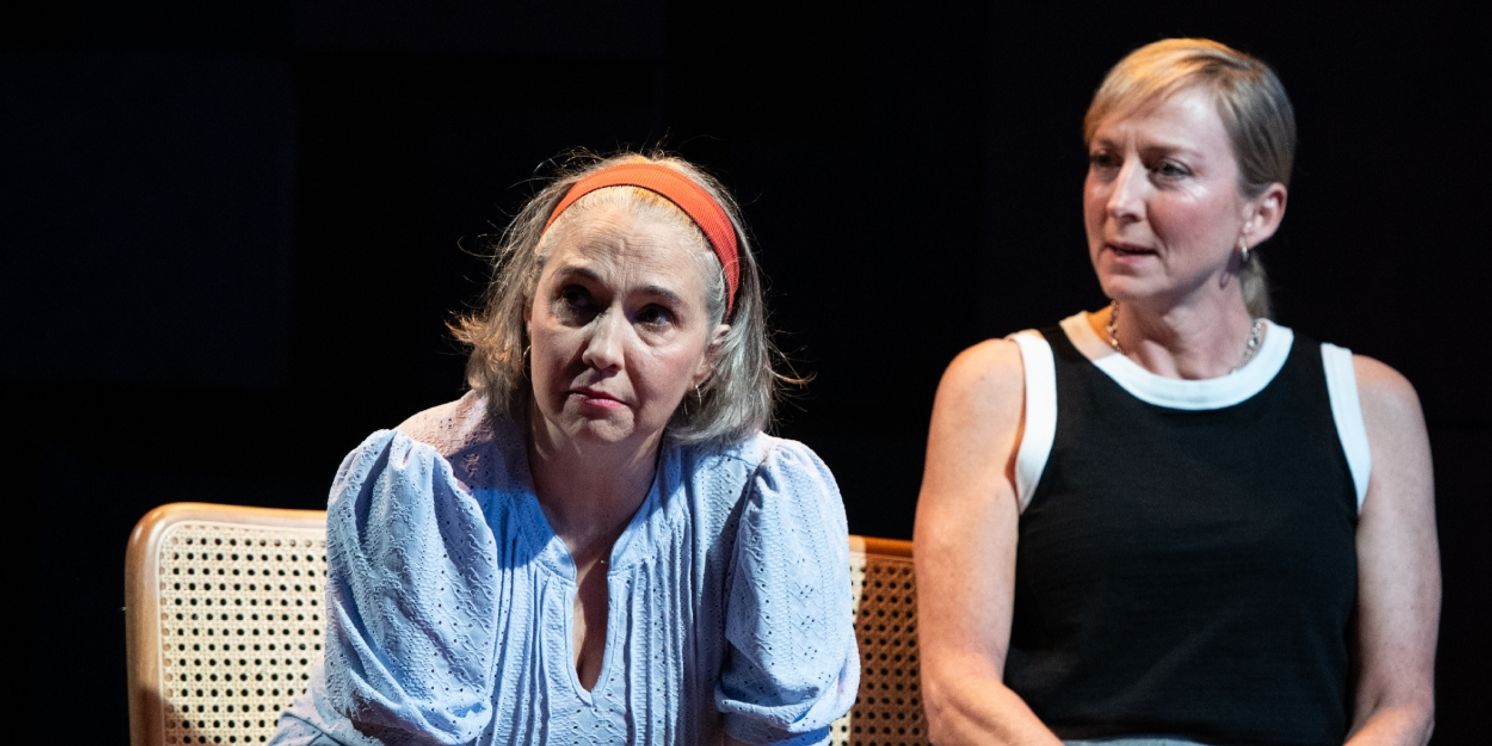Review: SUMMER, 1976 at Studio Theatre
A duet for two of DC's greatest actors, through December 22

In his 90 minute one-act Summer, 1976, playwright David Auburn describes and explores female friendship and how and why it operates. In 1976, when most of the play takes place, feminism had not yet fully extricated women from the centuries-old male notion that all women must needs be competitors and rivals, but it had come a long way. And that's one of the elements that makes Summer, 1976 absorbing; Kate Eastwood Norris and Holly Twyford are the other two, unrivalled elements.
Norris and Twyford play Diana and Alice, respectively, who seem very dissimilar. Diana, single-parenting a daughter, teaches art at the same Ohio college where Alice's husband teaches econ and struggles towards tenure; Alice keeps house and raises their daughter. The girls are 5 and become friends instantly; the moms don't--lifestyle, personal style, and judgement habits get in their way. But eventually they do form a relationship, and their evolution is worth watching. Norris and Twyford capture every nuance of the evolution and so many of the thoughts and feelings that Diana and Alice experience during the journey. Nevertheless, Auburn makes their work harder by having Diana and Alice narrate most of the play directly to the audience; only about 30% of the play consists of dialogue between the two characters. So Norris and Twyford have to switch in a flash from the affable storytelling modes, which they use to address the audience long after the events in the play have concluded, to the way in which Diana and Alice lived through some of those events. What this writing choice is meant to contribute to the audience's experience of Summer, 1976 never comes into focus. But if Diana and Alice seem somewhat undermined by it, Norris and Twyford are not and cannot (ever) be.
Director Vivienne Benesch mostly, wisely stays out of the actresses' way and makes sure everyone else does too; sets, costumes, sound, projections: all present--all fine--all in support of Norris and Twyford. So why do Diana and Alice have to be barefoot to tell this story of female culture, female struggle, female life? What notion did that serve? What character trait did it illuminate? What emotion did being barefoot clarify? Everyone is barefoot for part of every day whether it's 1976 or 2024; but almost no one is barefoot all day, every day, indoors and out. What idea or theme was explicated or enhanced by two people going through daily life fully clothed, but without anything on their feet? Or was it some sort of metaphorical way to assert that the status of women must needs be different? Still? The bare feet distracted from the two splendid performances.
(Photo by Margot Schulman)
Reader Reviews
Videos

